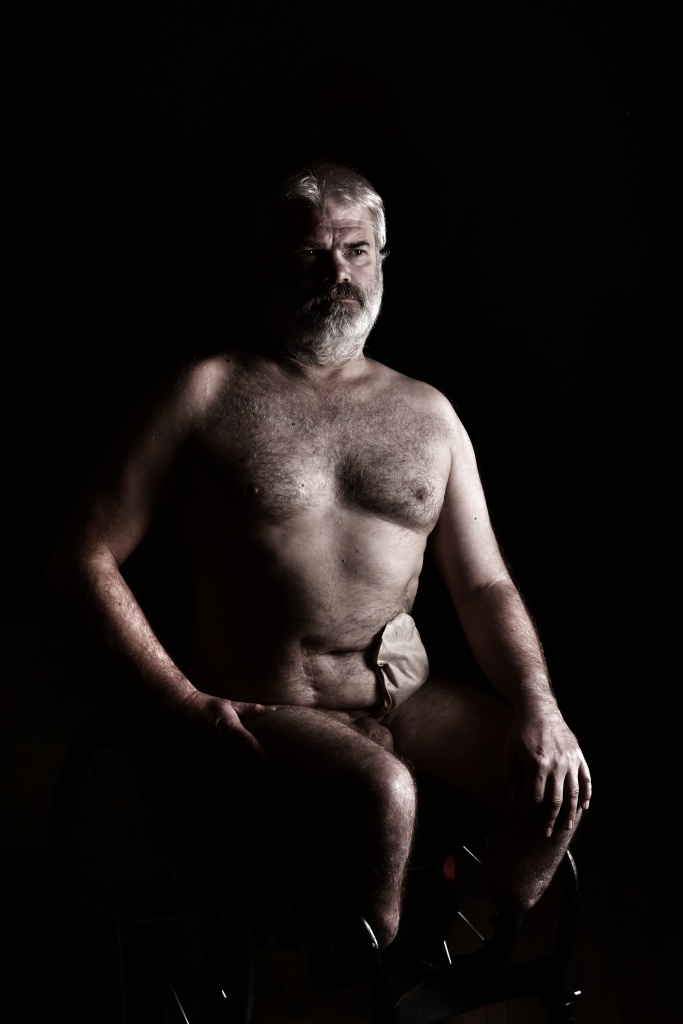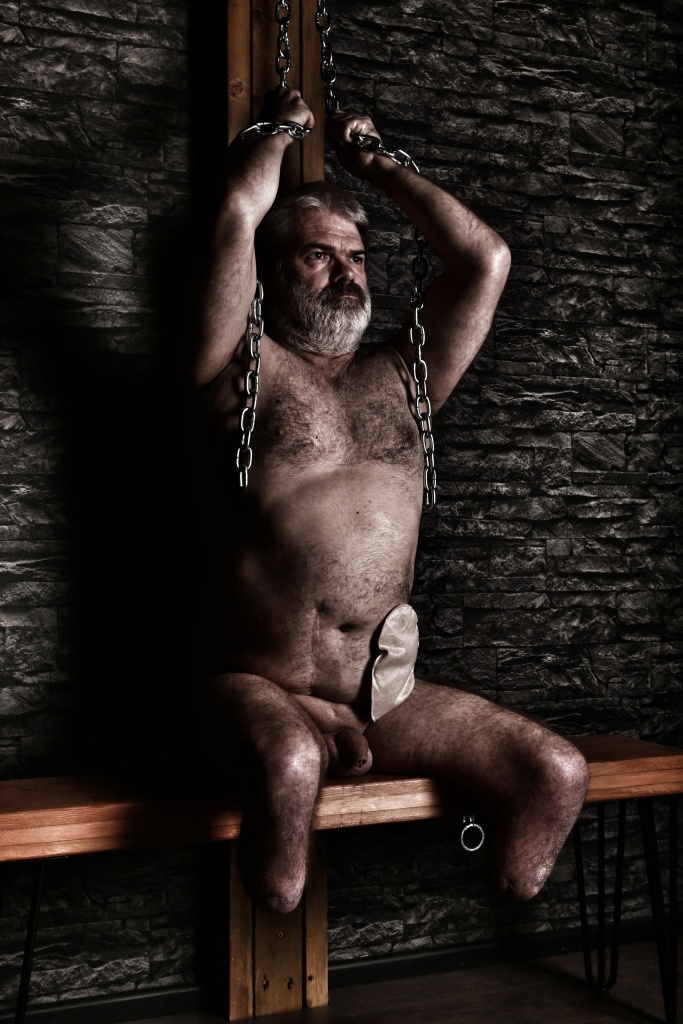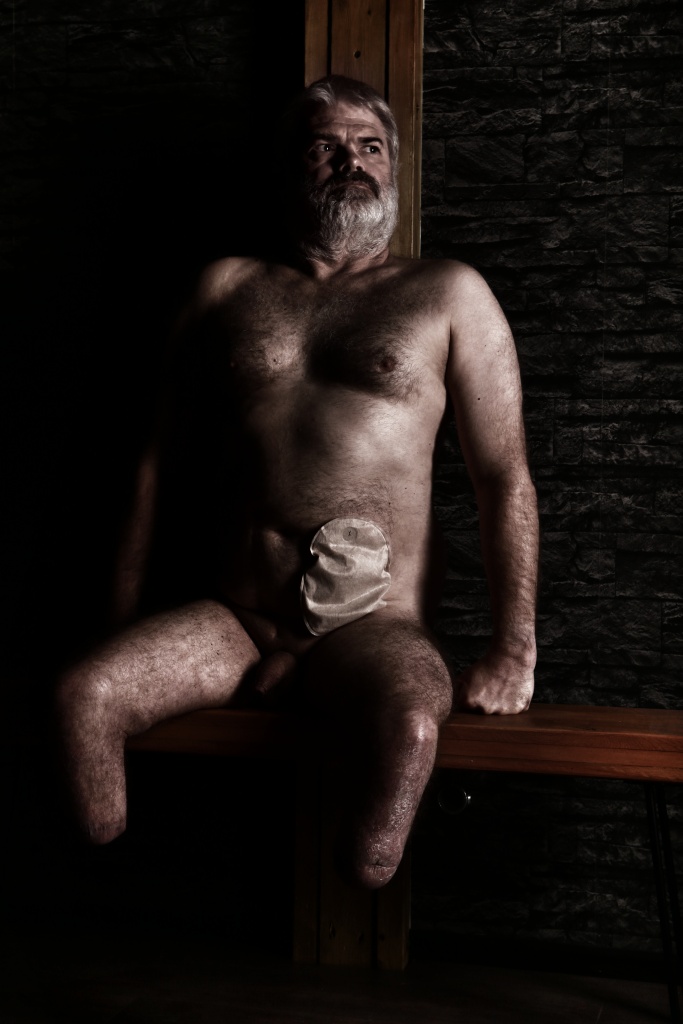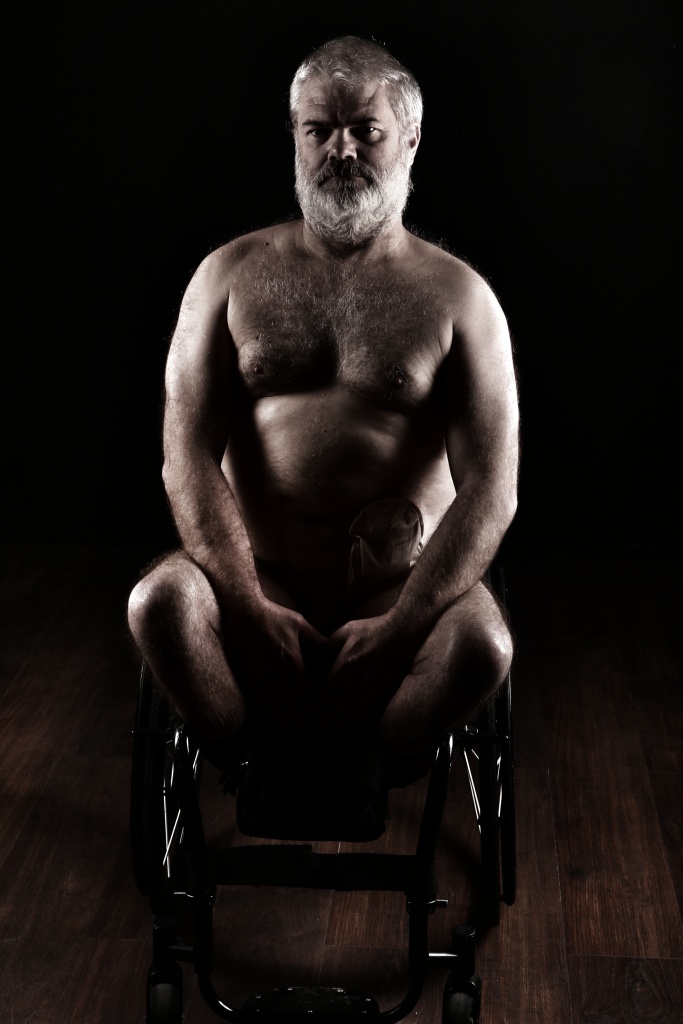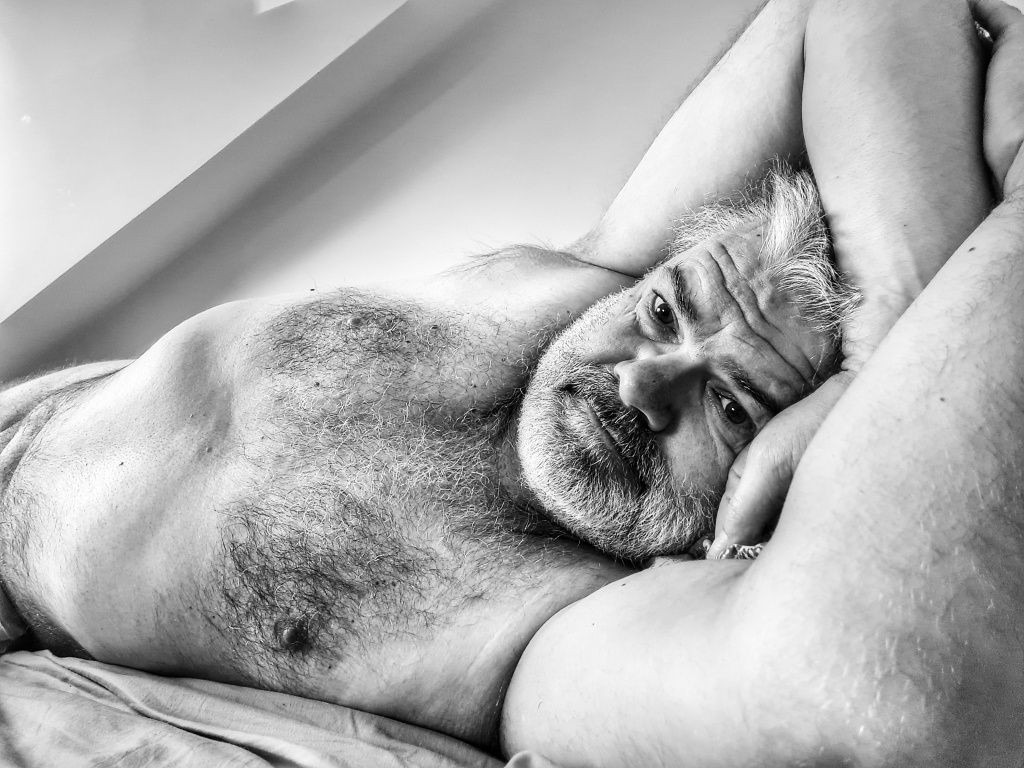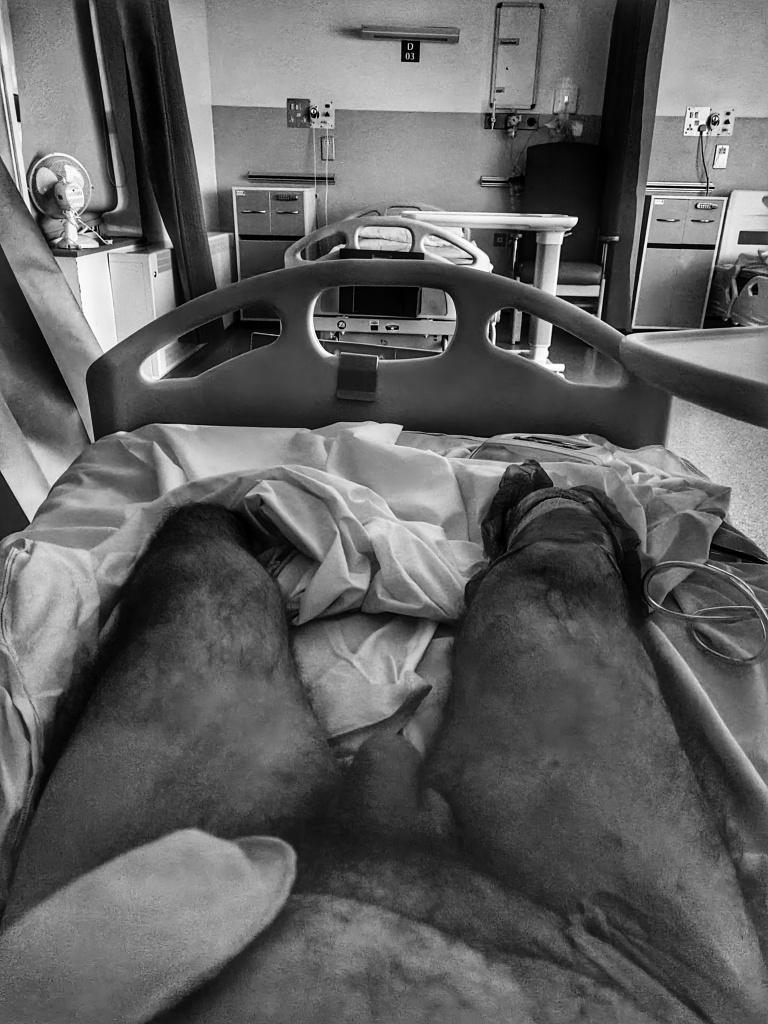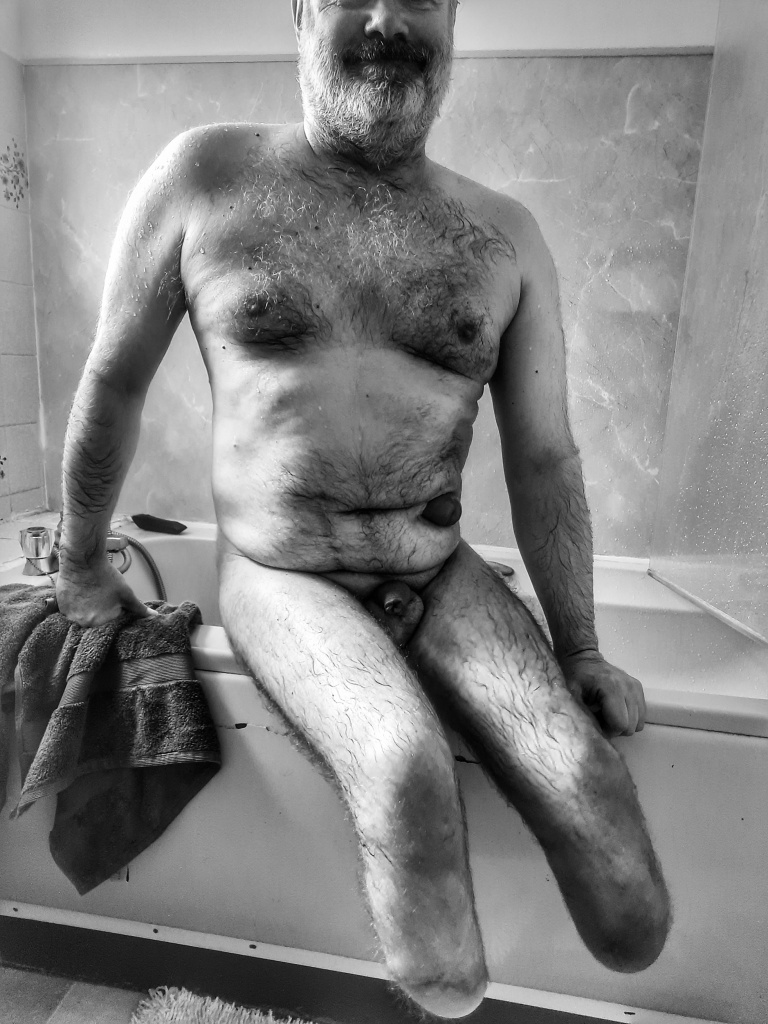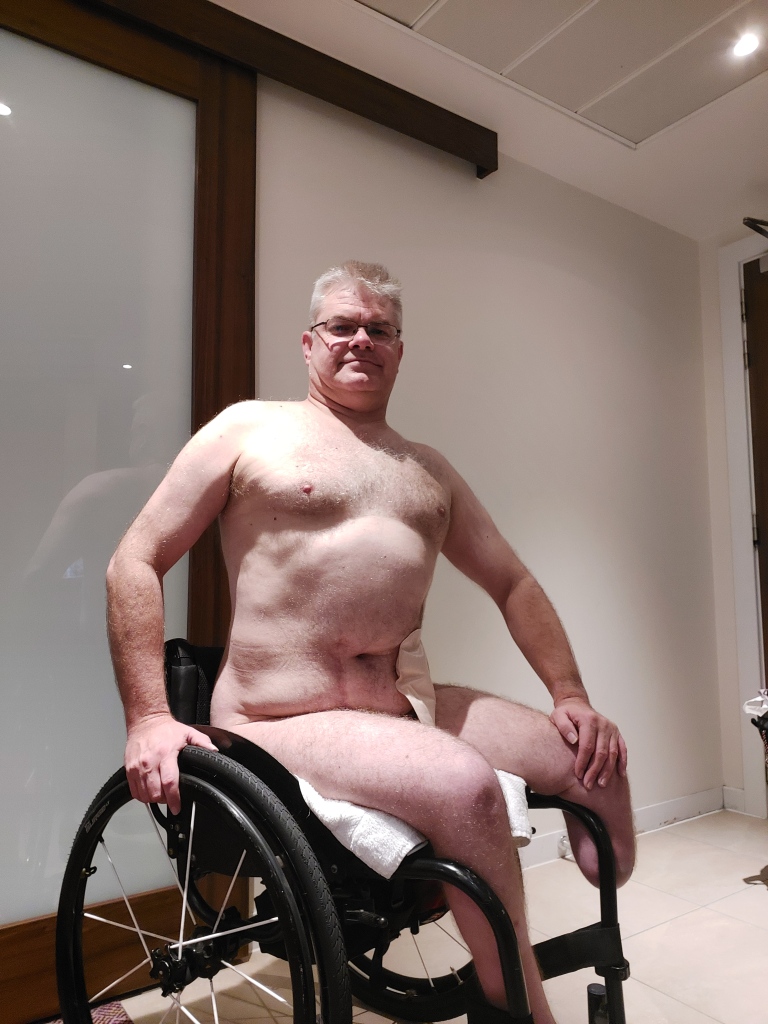Following on from the second amputation I went through a period of physio to get me ready for and then proficient on my new legs. Having had lifelong problems with my gait this was never going to be easy but the physios worked me hard and I everything they through at me to ensure I had the best chance of being as mobile as possible. Like most things in life, you get out of it what you put in and a lot of the time I’d leave physio looking like I’d had a fairly heavy gym session as you can see below.
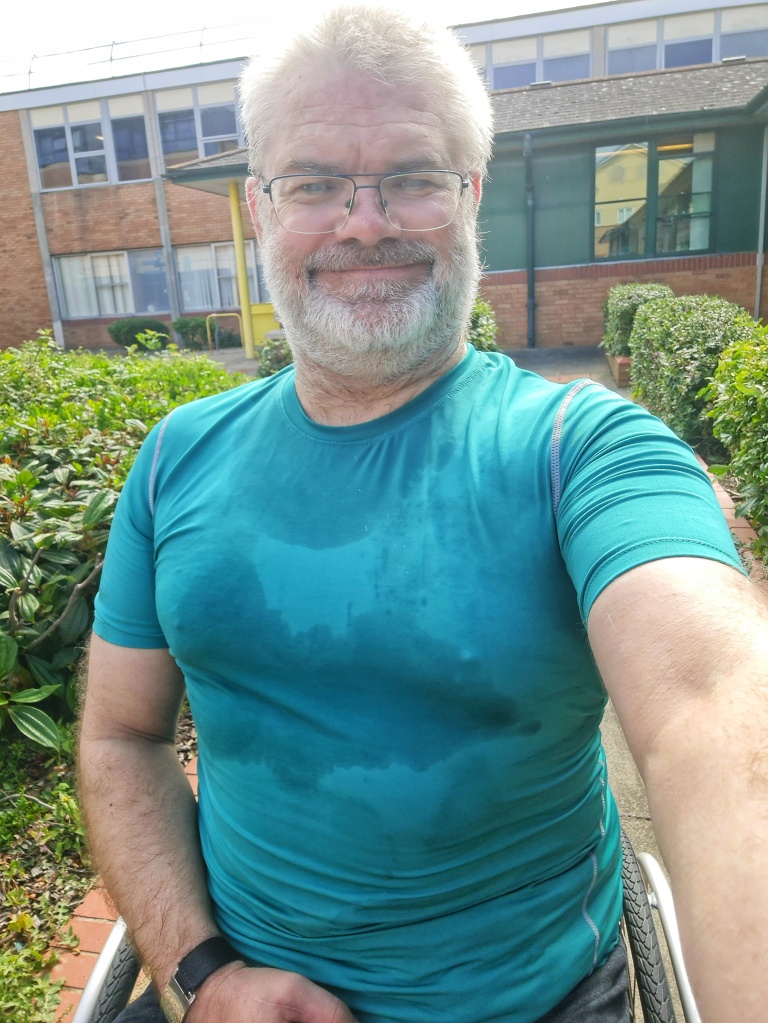
This got me more in touch with my body and colleagues noticed that I was looking ‘buffer’ to use their words. This inspired me to try to do something to keep fitter once the twice weekly physio sessions stopped. After a bit of searching, I found a local lake ran open water swimming sessions several times a week. I went along to see how accessible it was and the staff and other swimmers couldn’t have been more welcoming. I started going regularly and I was managing 250m – 400m with a bit of effort. Thene one week at the beginning of August I decided to push myself. I did 500m on the Monday, 500m on the Tuesday, 400m on the Thursday, 750m on the Saturday and to my amazement 1,000m on the Sunday. After that I was doing over 1km every session. The summer ended before I could push out to 1.5km and 2km but I kept swimming through the winter, just not in the water for anywhere near as long. The act of getting in the water and the camaraderie with the other swimmers has been amazing and a real boost to my mental health.
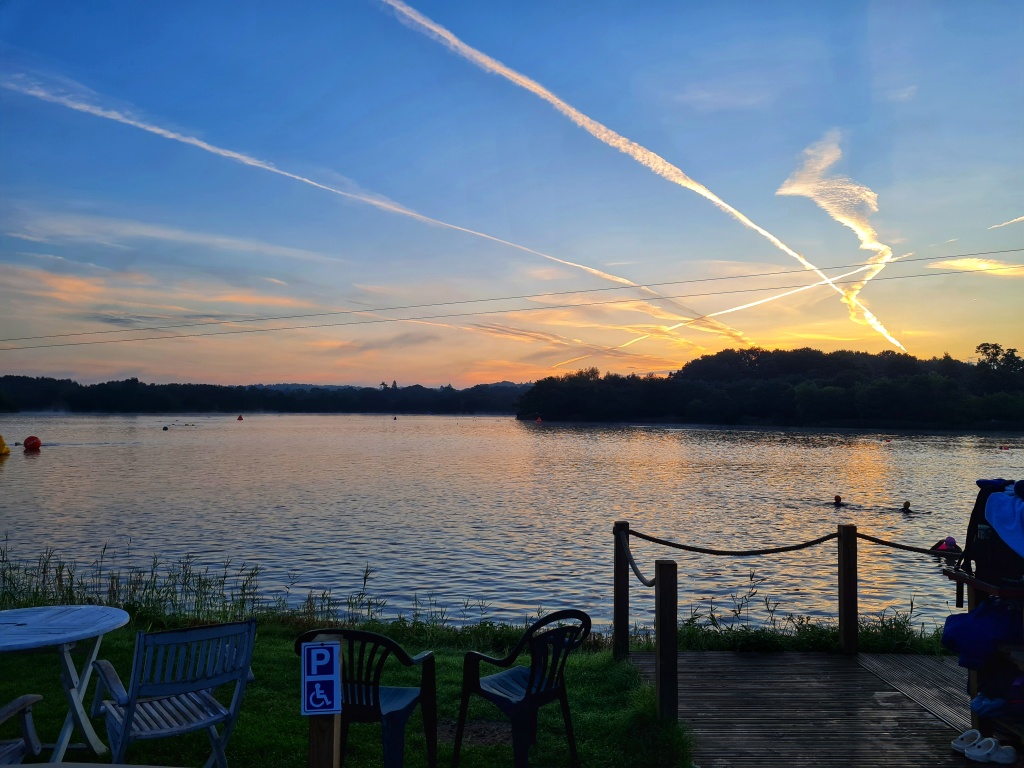
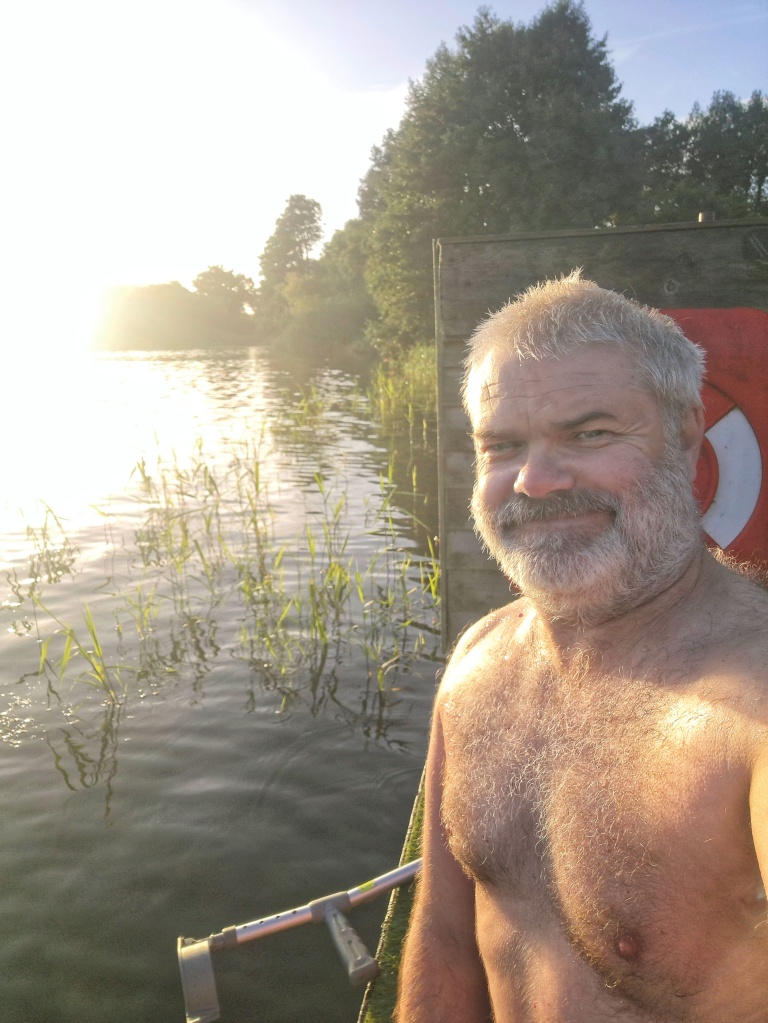
I’d posed for photographers in the past and one of the things I promised myself found out I had to have the second amputation was to get some new photographs done. I finally managed this in November at a small studio near Southampton. I had a few conversations with the photographer beforehand and went to the shoot with a really open mind about what images to capture. The studio was great with a range of sets for a selection of moods. I was there for about four hours and got some images I was really proud of. It was good to see my ‘new’ body from a different perspective and shown in it’s best light.
